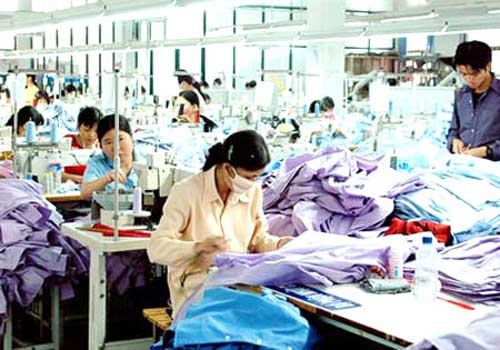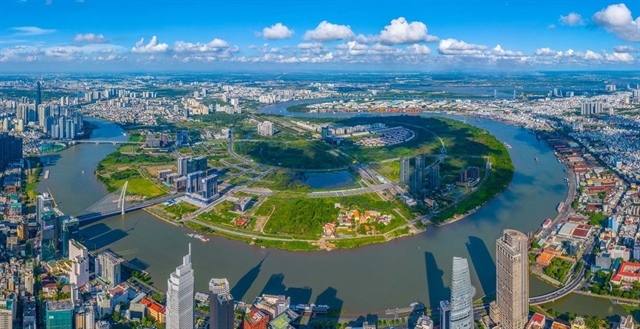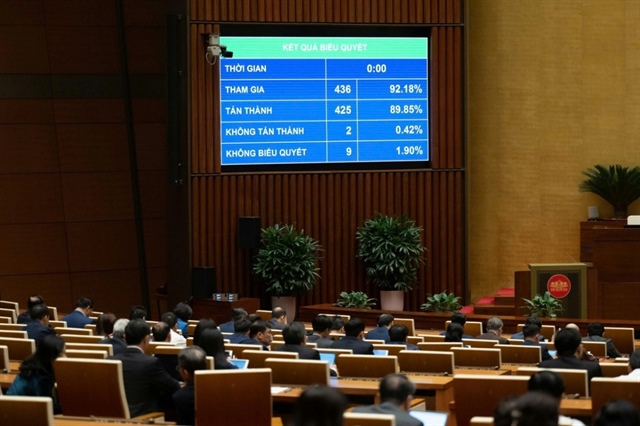Economy shows signs of stability
Economy shows signs of stability
Viet Nam's economy is showing signs of stable development in the face of difficulties caused by the global economic crisis, director of the Ministry of Planning and Investment's General Statistics Office Do Thuc has said.

Thuc made his comments at a press conference in Ha Noi on socio-economic situation in the first half of this year. He said the country's gross domestic products (GDP) grew 4.38 per cent in the first six months against the same period last year.
"Although the growth was lower than that targeted for the whole year at 6-6.5 per cent, the GDP was recognised as being in an upward trend. GDP growth in the second quarter was 4.66 per cent, whereas it was merely 4 per cent in the first one," Thuc said.
The growth stemmed from a better performance of industrial and construction sectors which had a high proportion of influence over other sectors. Manufacturing and construction areas recognised a solid growth at 4.52 per cent in the second quarter, compared to 2.94 per cent in the first.
In the first half, services reflected the highest growth at 5.57 per cent, next was manufacturing and construction, which expanded 3.81 per cent; the agro-forestry and seafood sector went up only 2.81 per cent.
Meanwhile, the consumer price index growth had been curbed by gradually decreasing growth in the first half.
CPI increased 1 per cent and 1.37 per cent in January and February. Then the growth rate inched up 0.16 per cent, 0.05 per cent and 0.18 per cent in March, April and May, respectively.
The index showed a fall in growth of 0.26 per cent in June, the first period of negative growth in 38 months of a rising index.
The State budget increased 5.1 per cent, as a result of over-expenditure which was held at 4.8 per cent, lower than the target of 5 per cent, the ministry reported.
Exports skyrocketed by 22.2 per cent, whereas imports maintained a lower growth at 6.9 per cent in the first half, making trade deficit slow down nine times lower than in past years.
According to the ministry, the total investment capital of the whole socio-economy reached VND431.7 trillion (US$20.56 billion) in the first half, a year-on-year increase of 10.1 per cent and equal to about 34 per cent of the total GDP. Of this, State-owned capital was VND158.7 trillion ($7.56 billion), accounting for 36.8 per cent, rising 6.8 per cent against the same period last year.
The non-State sector hit VND163 trillion ($7.76 billion), making up the highest proportion at 37.7 per cent, increasing 18.1 per cent. The remainder was contributed by the FDI sector with a growth rate of 4.2 per cent.
However, Thuc said: "Viet Nam faces lower demand and it is a hindrance and a challenge for stable economic development.
"It requires appropriate policies on finance, currency, banking interest rates, total outstanding loans and public investment among others. The policies must be governed timely under strict control in order to ensure effective economic development and inflation is reined in."
Poor demand was shown by high goods inventories, Thuc said. The inventory index of industrial products was 26 per cent in June, whereas the indices represented growth rates ranging from 26.9 per cent to 34 per cent in the first five months.
A number of enterprises that stopped operations in the first half reached 26,324, up 5.4 per cent from the same period last year, whereas figures of newly established companies slumped 12.5 per cent year-on-year, he said.
The unemployment rate was 2.22 per cent, slightly higher than the previous corresponding time.
With current impediments and poor demand, it would not be easy for economic growth to surpass 6 per cent for the whole year, Thuc said.
vietnamnet




















